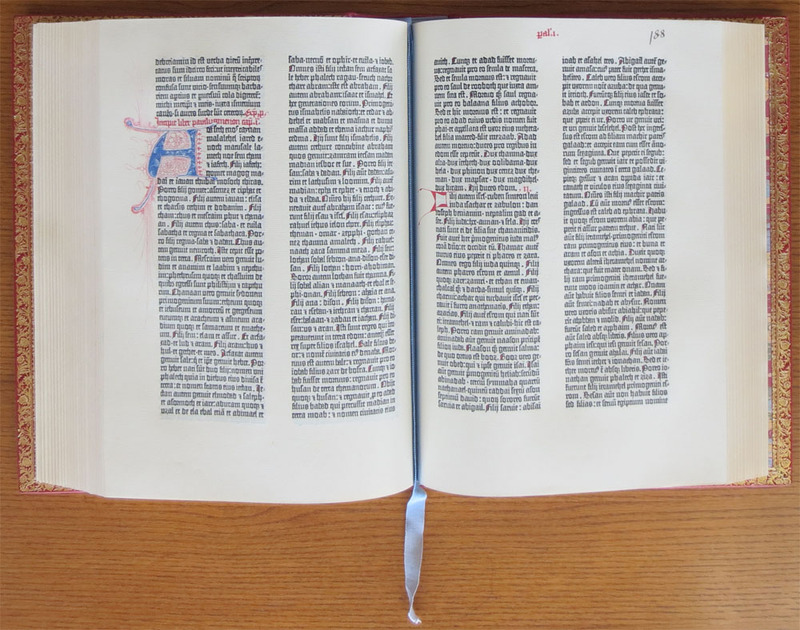Gutenberg
Johann Gensfleisch was born in Mainz, Germany about 1397 and as was the custom of patrician families in that era, was known by his mother's family name, Gutenberg. Through early experiments in metallurgy and manufacturing items to sell to pilgrims, Gutenberg saw that the key to profits was inexpensive mass production. Gutenberg's astute sense of what was marketable led him to take his first steps into printing.
Printing was not unknown, as woodblock printing had been practiced in the East for some centuries. In Europe, woodblocks were used for the printing of textiles and playing cards. Gutenberg took pains not to reinvent the wheel. Over an approximately twenty-year period, he adapted existing technologies such as the winepress, textile presses, and hand presses used by papermakers and bookbinders to construct his printing press. But essential to this press was the invention of an adjustable hand-mold which would allow the casting of thousands of letters efficiently and with precision. In addition, a special ink needed to be devised. Gutenberg's ink formula, oil paint with a high copper and lead content, is still black and glossy after 500 years. He devised such a remarkably effective technique, that the principles of his invention remain unchanged to this day. Gutenberg's contributions rendered obsolete the handwritten books of his age.
Bible. Latin. Vulgate, 1454? 1985.
The Gutenberg Bible: A Commentary, Historical Background, Transcription, Translation / by Jean-Marie Dodu. [Paris]: Editions Les Incunables, 1985. 4 volumes. 41 cm.
Call Number: (RARE) Z 241 .B58 1985
In or shortly before 1455, Gutenberg printed a large two-volume Bible. It has been conjectured that the edition consisted of about two hundred copies, some on vellum, others on paper. (Extant copies include twelve on vellum and thirty-six on paper). This Bible, consisting altogether of 643 leaves printed in double columns of large, closely-woven type, is known by several names: the "42-line" Bible, from the number of lines of type in a column; the "Mazarin" Bible, for the seventeenth-century French cardinal in whose library a particularly fine copy was housed; and the "Gutenberg" Bible from the belief that is is essentially the creation of Johann Gutenberg. By whatever name, the volume is considered to be the first substantial book printed from movable type.
This outstanding reproduction of the original, derived from the Mazarin copy, reveals the excellence of design and craftsmanship employed by Gutenberg.

